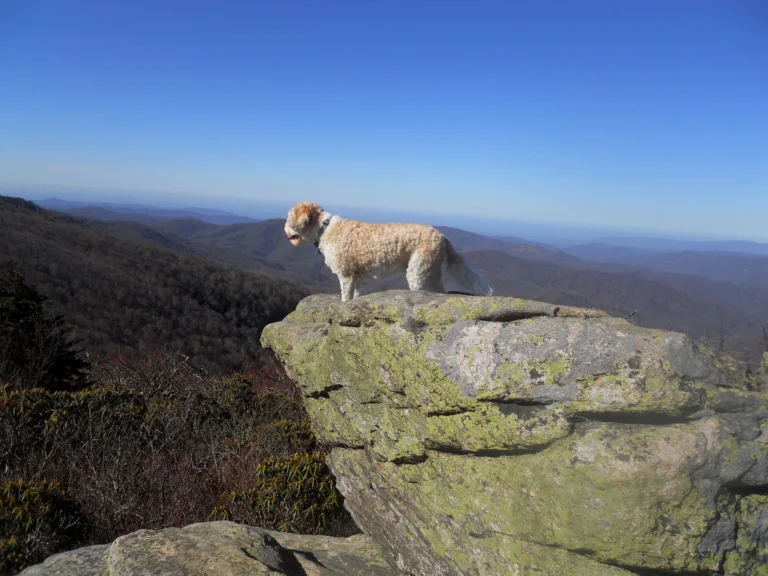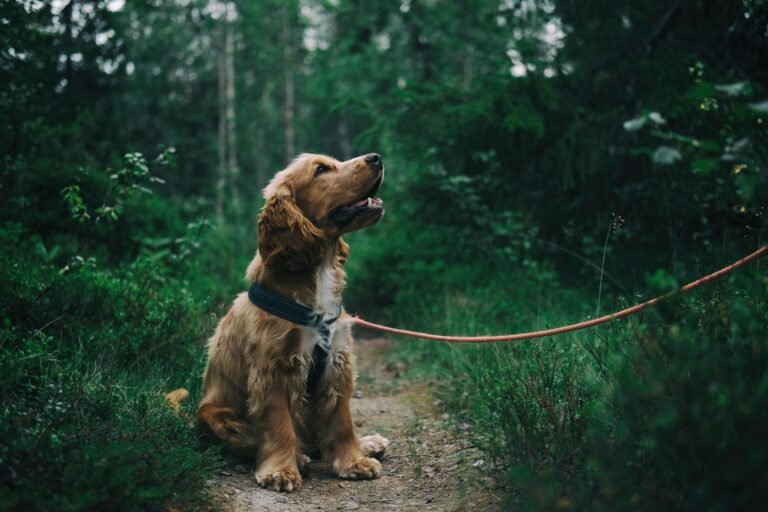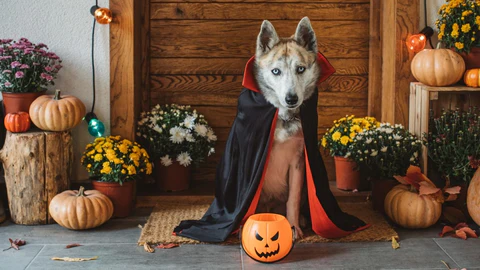Dog training for outdoor adventures is an exciting journey you can commence on with your furry companion. Proper preparation is key to ensuring that your dog enjoys the great outdoors without feeling stressed or anxious. This guide will provide you with crucial tips and techniques to help you train your dog effectively, fostering their confidence and enthusiasm for new experiences. Together, you can explore trails, parks, and open spaces while building a strong bond through positive reinforcement and patience.
Key Takeaways:
- Begin with short, positive experiences in familiar settings to build your dog’s confidence.
- Gradually introduce new environments, ensuring the pace aligns with your dog’s comfort level.
- Use positive reinforcement to encourage good behavior and to create enjoyable associations with outdoor activities.
Understanding Your Dog’s Capabilities
Evaluating your dog’s skills and limitations is important for a successful outdoor adventure. Each breed possesses unique traits and varying energy levels, so knowing what your dog can handle ensures a positive experience. Pay attention to their physical and mental capacities and tailor your outings accordingly for maximum enjoyment and safety.
Assessing Fitness Levels
Start by gauging your dog’s current fitness level. This involves regular exercise routines to determine how well they can handle longer hikes or intense activities. Gradually increase the duration and intensity of these workouts, noting how your dog responds. If they seem fatigued or reluctant, adjust your plans to suit their conditioning.
Recognizing Stress Signals
Your dog will communicate discomfort or stress through various signals. Look for signs such as excessive panting, drooping ears, or a lowered tail. These cues can indicate that your dog needs a break or a change of pace. Be vigilant, as a stressed dog may also exhibit avoidance behaviors or become overly excited, which can lead to unsafe situations during outdoor activities.
Pay attention to body language and vocalizations. For instance, if your dog constantly looks back or stands still despite calls, it’s a sign they may be overwhelmed. A quick check-in by offering water or a leash adjustment can help alleviate their anxiety. Keeping an eye on these behaviors enables you to adapt your adventure in real time, ensuring it remains enjoyable for both you and your dog.
Preparing for Outdoor Adventures
Before heading out into nature, preparation is key. Assess your dog’s fitness level and gradually increase the duration and intensity of your outings. Start with short walks and progressively introduce longer hikes, ensuring your dog feels comfortable along the way. Familiarize yourself with Adventure Dog 101: Tips for hiking and camping with canines to set yourself up for success.
Essential Gear for Your Dog
Your dog’s gear is just as important as your own. Invest in a well-fitting harness that distributes pressure evenly and prevents pulling. A lightweight, durable leash is a must, along with a dog backpack if your pup is ready for it. Don’t forget a properly-sized water bowl and high-quality, easily digestible snacks to keep your furry friend energized.
Choosing the Right Environment
Selecting the right environment plays a significant role in the success of outdoor adventures with your dog. Look for locations with manageable terrain, minimal distractions, and ample opportunities for exploration. Consider nearby parks, trails, or nature reserves that welcome dogs and offer varying landscapes. Always check if the area has dog-specific rules, as some places may require leashes or have restrictions.
Training Techniques for Outdoor Success
Effective training techniques not only prepare your dog for outdoor adventures but also enhance their overall behavior. Start by establishing a routine that integrates commands and outdoor exposure in a way that feels natural. Use positive reinforcement to encourage good behavior, pairing treats with verbal praise to build a strong connection between commands and outdoor excitement. The goal is to create a confident, well-behaved companion who enjoys the adventure as much as you do.
Building Basic Commands
Essential commands like “sit,” “stay,” and “come” form the foundation of your dog’s training. These commands ensure safety in unpredictable outdoor environments. Start training in a quiet space before gradually introducing distractions. Use short training sessions to keep your dog engaged and gradually increase difficulty as your dog masters each command, reinforcing their learning with rewards.
Gradual Exposure to Outdoor Elements
Introduce your dog to outdoor elements step-by-step, starting in familiar surroundings. Begin with short explorations that expose your dog to various sights, sounds, and scents. Monitor their reactions and adjust your pace, ensuring they remain comfortable. Gradually progress to different terrains, busy parks, or hiking trails, always allowing for a positive experience that builds their confidence.
When exposing your dog to the outdoors, consider their individual sensitivities and preferences. If your dog shows signs of anxiety, such as tail tucking or hesitance to move forward, take a step back. For example, allow them to explore a local garden or quiet nature path before tackling busier areas. Frequent, short outings can significantly enhance their comfort level, making each subsequent adventure more enjoyable. By respecting your dog’s pace, you’ll foster a more adventurous spirit while ensuring their well-being.
Tips for Positive Reinforcement
- Use treats your dog loves.
- Incorporate verbal praise consistently.
- Celebrate small achievements.
- Keep sessions short and engaging.
- Be patient and allow for exploration.
Perceiving your dog’s response to rewards is vital in shaping their behavior during outdoor activities.
Using Treats and Praise Effectively
Incorporate high-value treats that your dog only receives during training sessions to maintain their motivation. Pair these treats with enthusiastic verbal praise at the moment they exhibit desired behaviors, reinforcing the association between good behavior and positive outcomes. Ensure that you have a variety of treats on hand to keep your dog engaged and excited throughout the training process.
Encouraging Exploration and Play
Engage your dog’s natural curiosity by encouraging exploration and play during your outdoor adventures. Use toys or interactive games that stimulate your dog’s instincts, allowing them to discover their surroundings at their own pace. This not only helps keep your dog happy but also builds their confidence in unfamiliar environments.
Encouraging exploration and play can take various forms, such as using a long leash to give your dog the freedom to roam while maintaining control. You might hide treats within a designated area or incorporate games of fetch to reinforce their engagement with the environment. Additionally, allowing your dog to sniff and investigate different natural elements can help them become more comfortable and less overwhelmed in new outdoor settings.
Factors to Consider Before Each Adventure
Before commenceing on any outdoor adventure with your dog, consider multiple factors to ensure a positive experience. Key elements include:
- Your dog’s current health status
- The terrain you plan to navigate
- The proximity to other pets and people
- Your dog’s level of training
Recognizing these aspects will help you tailor the adventure to suit your dog’s needs and ensure enjoyment for both you and your furry friend.
Weather Conditions
Weather can significantly impact your dog’s comfort and safety during outdoor activities. Some breeds tolerate heat and cold better than others, but extreme temperatures can be dangerous. Be mindful of humidity levels, wind chill, and precipitation. Plan for shade in hot weather and ensure warm gear in cold conditions. Always check the forecast before heading out and adapt your plans accordingly.
Duration and Intensity of Activities
Choosing the right duration and intensity for your outdoor activities is vital for your dog’s enjoyment and well-being. Ideally, you should start with shorter, less intense outings, gradually increasing the challenge as your dog becomes more conditioned. Pay attention to your dog’s cues: if they start lagging, panting excessively, or appear distressed, it’s a sign to slow down or cut the outing short.
For instance, beginning with a 30-minute hike on a flat trail is advisable, slowly increasing to an hour or introducing more challenging terrains over weeks. This approach helps build stamina and confidence. Aiming for moderate intensity will encourage your dog to explore without exhausting them. Regular checking in on your dog’s energy and providing opportunities for breaks can ensure a positive outdoor experience.
Creating a Routine for Outdoor Activities
Establishing a routine for outdoor activities helps your dog anticipate and enjoy their adventures, leading to a more positive experience. Aim to integrate regular outdoor excursions into your weekly calendar, ensuring consistency. Start with shorter excursions to gauge your dog’s energy levels and gradually increase the distance and duration as your dog becomes more adept at handling them. This predictability not only benefits their training but also strengthens the bond between you and your dog.
Establishing a Schedule
Design a schedule that accommodates both your availability and your dog’s energy levels. Aim for at least three outdoor sessions each week, adjusting the intensity depending on your dog’s age and fitness level. Early mornings or late afternoons often present cooler temperatures, making these times optimal for walks or hikes. Be flexible; if your dog shows signs of fatigue, adapt your planned activities accordingly to ensure each outing remains enjoyable.
Incorporating Varied Experiences
Diversifying your outdoor experiences keeps your dog engaged and mentally stimulated. Incorporate different environments, such as parks, beaches, or wooded trails, to expose your dog to various sights, sounds, and smells. Each new location offers unique challenges and enriches your dog’s understanding of their surroundings. For instance, practicing obedience commands in different settings can enhance their focus, turning each outing into a rich learning experience that fosters confidence.
By incorporating varied experiences, you stimulate your dog’s senses while building their adaptability. Alternate between calm environments, like a quiet park, and more stimulating ones, like a bustling beach or a busy hiking trail. Engaging in water activities or using agility equipment at parks can introduce fun, physical challenges that enhance your dog’s skill set. Tracking different wildlife scents, navigating obstacles, or even playing fetch in new locations contributes to a well-rounded outdoor routine. Each adventure presents an opportunity for both of you to explore together, making your time outside rewarding and exciting.
Final Words
On the whole, training your dog for outdoor adventures requires patience and a gradual approach to ensure they feel comfortable and engaged. Start with short trips that align with their skill level and gradually increase the complexity as they gain confidence. Use positive reinforcement consistently to build a strong bond and help them associate outdoor activities with fun experiences. Keep your sessions enjoyable and responsive to your dog’s needs, allowing for breaks and playtime. By doing so, you will foster a sense of adventure in your dog without overwhelming them, setting the stage for memorable outdoor experiences together.
FAQ
Q: What are the first steps to prepare my dog for outdoor adventures?
A: Start by introducing your dog to different environments gradually. Begin with short walks in new locations, ensuring your dog feels comfortable. Gradually increase the duration and complexity of the outings, using positive reinforcement to build confidence.
Q: How can I ensure my dog doesn’t feel overwhelmed during outdoor adventures?
A: Monitor your dog’s body language for signs of stress, such as panting or hesitance. Take breaks often, allowing your dog to explore at their own pace. Keep the outings short at first, and always have treats or toys to redirect their focus if they become anxious.
Q: What equipment is necessary for training my dog for outdoor activities?
A: Essential equipment includes a well-fitted harness or collar, a leash, poop bags, and plenty of water. Consider using a calming vest if your dog tends to get anxious outdoors, and bring along a comfortable bed for rest during breaks.







